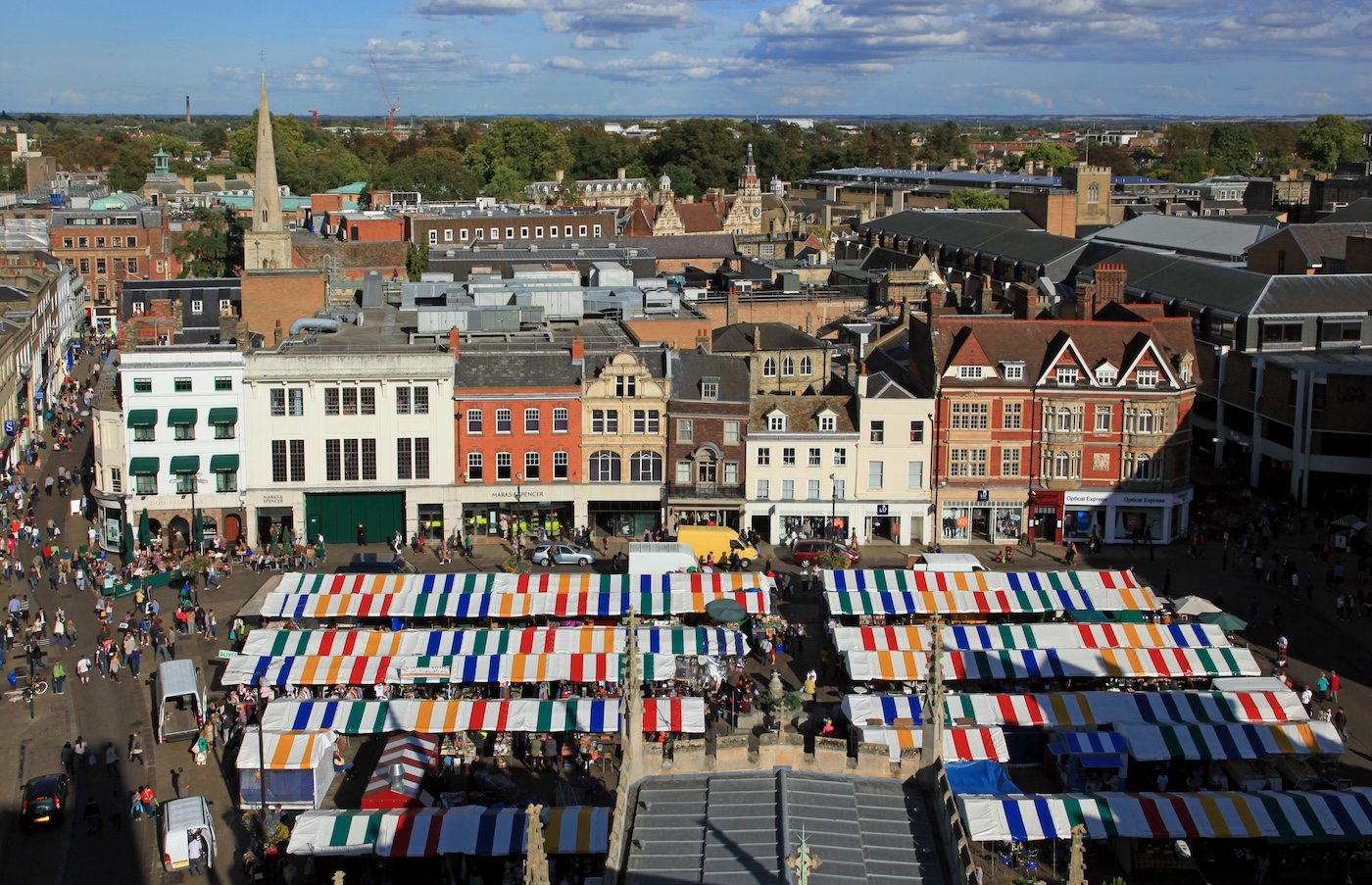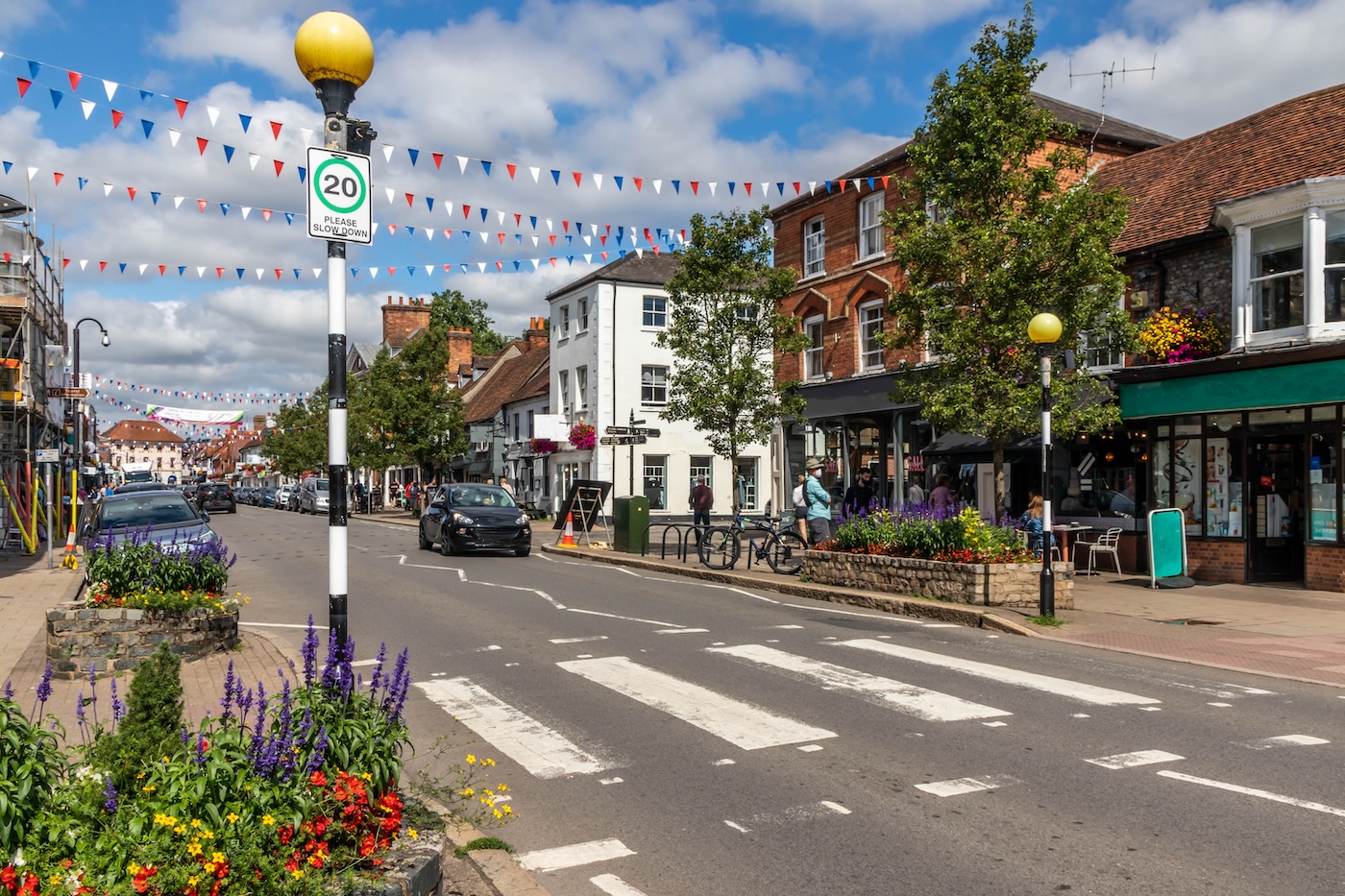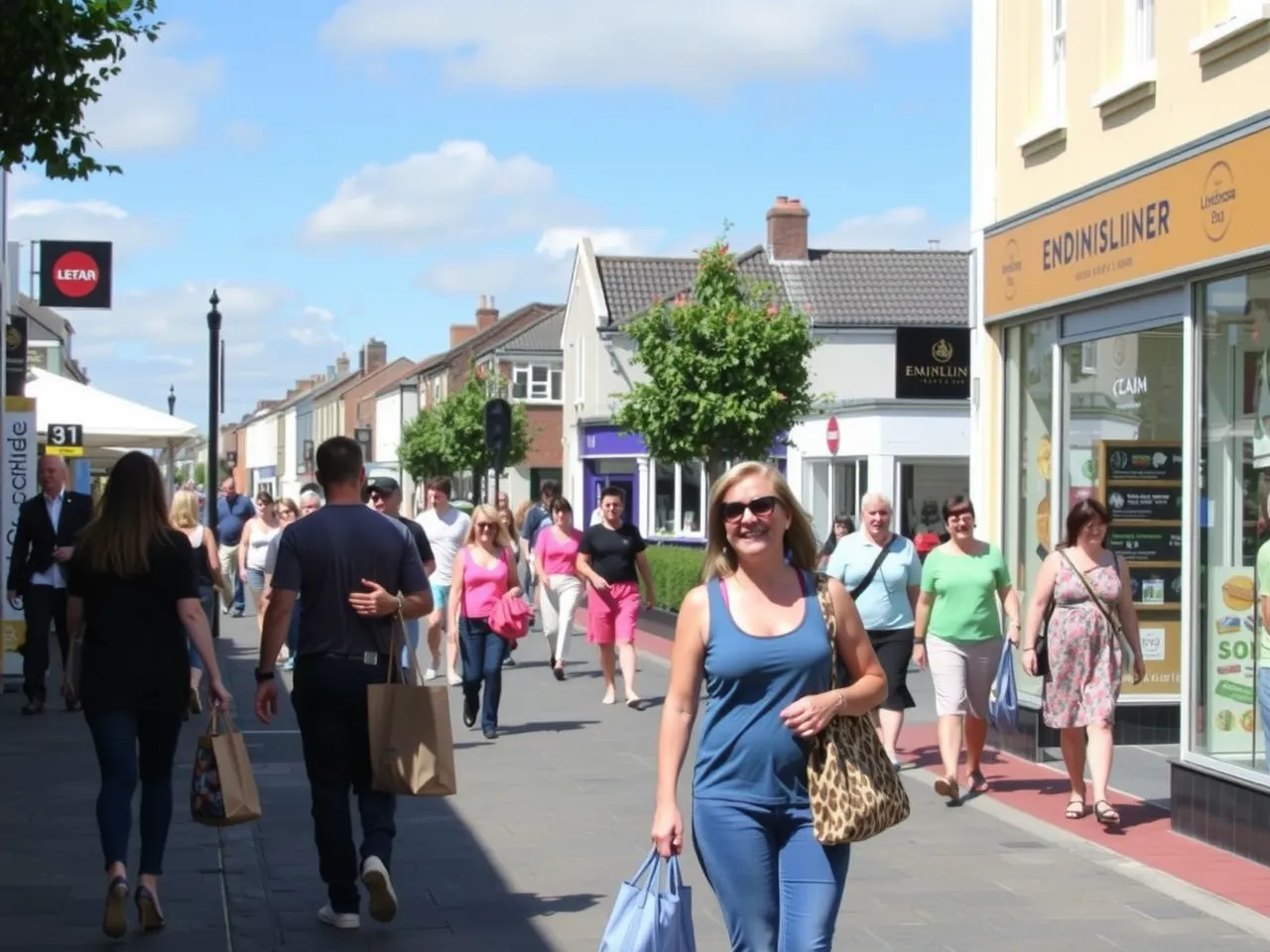Shopping Centres Footfall Report: London Sees 1.7% Rise in Week 50
Weekly Wrap: UK Retail Footfall Insights: Week Ending January 4, 2025


Recent footfall data from Huq Industries reveals nuanced trends in footfall, dwell time, and visitation patterns across UK retail centres as of the week ending December 14, 2024. London shows a slight increase in average daily footfall with a 1.7% week-on-week growth, while the East of England and the South East regions exhibit contrasting trends. The former sees a minor decline, and the latter experiences a 2.8% increase in footfall week-on-week.
Shopping Centres Daily Footfall
Dwell time, which measures the average length of a visit, also varies significantly across regions. The South East reported a notable increase in dwell time, with visitors spending more time in retail centres compared to the previous week. Conversely, the North West saw a decrease in dwell time, indicating shorter visits.
Visitation patterns, particularly during working weekdays, have also shifted. The East Midlands region saw a significant increase in weekday visitation, suggesting a change in consumer behaviour or possibly promotional events driving more traffic during these times.
Partner with Huq
Track consumer footfall and spend dynamics across your store network using Huq data and compare to your own sales data. Gain insights into crucial questions such as ‘are we out-performing the market’, ‘where our similar locations for new store growth’, and ‘how healthy is this retail centre’.
If you are interested in basing your location insights to actual consumer behaviour then please connect with our team.
High Streets & Town Centres Footfall Report: Week Ending Dec 14, 2024
Weekly Wrap: UK Retail Footfall Insights: Week Ending January 4, 2025


Huq Industries’ latest footfall data reveals nuanced trends in retail centre visitation across the UK, highlighting regional variations in footfall, dwell time, and weekday visitation for the week ending December 14, 2024. The data, encompassing over 2,700 retail centres, shows a mixed landscape of consumer behaviour in different regions.
High Streets & Town Centres Daily Footfall
In London, there has been a notable increase in average daily footfall compared to the same week last year, with a significant rise in average visit dwell time as well.
Conversely, the North East and Wales have seen declines in footfall year-on-year, indicating regional challenges or shifts in consumer preferences. Particularly in Wales, the decrease is marked, alongside a reduction in dwell time, pointing to a faster, perhaps less engaged shopping experience.
Dwell time, which measures the average length of a visit, has generally increased across most regions, with the North East and Scotland showing substantial increases year-on-year.
Weekday visitation shares, which indicate the proportion of visits occurring during working weekdays, have slightly decreased in several regions, highlighting a shift towards weekend shopping.
Partner with Huq
Track consumer footfall and spend dynamics across your store network using Huq data and compare to your own sales data. Gain insights into crucial questions such as ‘are we out-performing the market’, ‘where our similar locations for new store growth’, and ‘how healthy is this retail centre’.
If you are interested in basing your location insights to actual consumer behaviour then please connect with our team.
Local Retail Centres Footfall Report: Week Ending Dec 14, 2024
Weekly Wrap: UK Retail Footfall Insights: Week Ending January 4, 2025


Recent footfall data from Huq Industries reveals nuanced trends in footfall, dwell time, and weekday visitation across various UK regions in local retail centres. As of the week ending December 14, 2024, the South East region shows a slight week-on-week increase in footfall by 0.2%, although there has been a notable decrease compared to the same period last year. In contrast, London exhibits a year-on-year increase in footfall by 5.3%, and a significant rise compared to the average of the last 12 months by 10.5%.
Local Retail Centres Daily Footfall
Dwell time, which measures the average duration visitors spend in retail centres, has seen substantial increases in several regions. For instance, the average visit dwell time in London has increased by 34.1% compared to last year, reaching 110 minutes in the latest week. Similarly, the East of England shows a significant year-on-year increase in dwell time by 33.7%, with the latest average being 115 minutes.
Weekday visitation shares, which indicate the proportion of visits occurring during weekdays, have remained relatively stable across most regions. However, Northern Ireland shows a notable increase in weekday visitation share by 3.5% year-on-year, reaching 50.3% in the latest week.
Partner with Huq
Track consumer footfall and spend dynamics across your store network using Huq data and compare to your own sales data. Gain insights into crucial questions such as ‘are we out-performing the market’, ‘where our similar locations for new store growth’, and ‘how healthy is this retail centre’.
If you are interested in basing your location insights to actual consumer behaviour then please connect with our team.
Footfall Data Highlights Regional Trends in UK Retail Centres, Week 50
Weekly Wrap: UK Retail Footfall Insights: Week Ending January 4, 2025


Huq Industries’ latest footfall data reveals nuanced trends in retail centre visitation across the UK, highlighting regional variations in footfall, dwell time, and weekday visitation for the week ending December 14, 2024. Notably, Northern Ireland experienced a significant increase in average daily footfall compared to the same week last year, while Wales saw a notable decrease in average visit dwell time year-on-year. The data also shows that working weekday visitation shares have fluctuated, with some regions experiencing decreases compared to the previous year.
Footfall Statistics and Trends
The report indicates that Northern Ireland’s retail centres have seen an increase in footfall, suggesting a robust consumer engagement in this region. Conversely, Wales has experienced a decrease in dwell time, indicating a potential shift in consumer shopping behaviours.
Market Outlook
Based on the direction of the latest footfall data and historical trends observed during the same period last year, Huq anticipates that the coming four weeks may see continued variability in footfall across different regions. Retail centres in Northern Ireland might maintain their upward trajectory in footfall, while other areas could experience shifts depending on local economic and social factors.
Major Retail Centres Daily Footfall
Partner with Huq
Track consumer footfall and spend dynamics across your store network using Huq data and compare to your own sales data. Gain insights into crucial questions such as ‘are we out-performing the market’, ‘where our similar locations for new store growth’, and ‘how healthy is this retail centre’.
If you are interested in basing your location insights to actual consumer behaviour then please connect with our team.
Retail Parks Footfall Report: Week 50 Sees Mixed Trends
Weekly Wrap: UK Retail Footfall Insights: Week Ending January 4, 2025


Recent footfall data from Huq Industries reveals nuanced trends in retail park visitation across the UK, highlighting regional variations in footfall, dwell time, and weekday visitation shares. As of the week ending December 14, 2024, the data shows a mixed landscape with some regions experiencing slight declines in footfall while others see modest gains.
Retail Parks Daily Footfall
Footfall Data Analysis
In the East Midlands, the footfall data indicates a stable trend with only a minimal change week-on-week. Conversely, the West Midlands shows a positive trend with a slight increase in footfall. Scotland shows a significant rise year-on-year for both dwell times and weekday visitations.
Market Outlook
Looking ahead, the direction of the latest footfall data suggests that the coming four weeks could see continued variability in footfall across regions. Last year’s trends indicate a potential for modest increases in regions like the West Midlands.
Partner with Huq
Track consumer footfall and spend dynamics across your store network using Huq data and compare to your own sales data. Gain insights into crucial questions such as ‘are we out-performing the market’, ‘where our similar locations for new store growth’, and ‘how healthy is this retail centre’.
If you are interested in basing your location insights to actual consumer behaviour then please connect with our team.
Weekly Wrap: UK Retail Footfall Trends: Mixed Results in Week 50, 2024
Weekly Wrap: UK Retail Footfall Insights: Week Ending January 4, 2025


Recent data from Huq Industries highlights a complex landscape of footfall trends across various types of retail centres in the UK for Week 50, ending December 14, 2024. This comprehensive analysis reveals mixed results, with some regions experiencing growth while others face declines, underscoring the dynamic nature of consumer behaviour in the retail sector.
Daily Footfall by Retail Centre Type
Regional Variations in Footfall
Retail Parks
In retail parks, the East Midlands showed minimal week-on-week changes, while the West Midlands experienced a slight increase in footfall. Scotland, notably, saw a significant rise in dwell times year-on-year, suggesting a more engaged consumer base. Read more about Retail Parks Footfall Report.
Major Retail Centres
For major retail centres, Northern Ireland reported a significant increase in average daily footfall compared to the same week last year, while Wales saw a decrease in average visit dwell time year-on-year. Read more about Major Retail Centres Footfall.
Local Retail Centres
Local retail centres in the South East saw a slight week-on-week increase in footfall by 0.2%, although there was a notable decrease compared to the same period last year. London, however, exhibited a year-on-year increase in footfall by 5.3%, with a significant rise compared to the average of the last 12 months by 10.5%. Read more about Local Retail Centres Footfall.
High Streets & Town Centres
High streets and town centres in London reported a notable increase in average daily footfall compared to last year, with significant rises in average visit dwell time. Conversely, the North East and Wales experienced declines in footfall year-on-year, with Wales also seeing a reduction in dwell time. Read more about High Streets & Town Centres Footfall.
Shopping Centres
In shopping centres, London saw a slight increase in average daily footfall with a 1.7% week-on-week growth. The South East experienced a 2.8% increase in footfall week-on-week, while the East of England saw a minor decline. Read more about Shopping Centres Footfall.
Weather Impact on Footfall
Weather conditions play a significant role in influencing footfall trends. For instance, London experienced cooler temperatures and slightly increased precipitation compared to the previous week, which may have affected consumer behaviour. Similar trends were observed across other regions, with varying impacts on footfall.
Market Outlook
Looking ahead, the direction of the latest footfall data suggests continued variability in footfall across regions. Retailers and commercial real-estate companies should monitor these trends closely to adapt to the evolving market conditions. Strategic decisions based on location intelligence data can help businesses optimise their operations and capture market opportunities.
Partner with Huq
Track consumer footfall and spend dynamics across your store network using Huq data and compare to your own sales data. Gain insights into crucial questions such as ‘are we out-performing the market’, ‘where our similar locations for new store growth’, and ‘how healthy is this retail centre’.
If you are interested in basing your location insights to actual consumer behaviour then please connect with our team.
High Streets & Town Centres Footfall Report: Week 51 2024
Weekly Wrap: UK Retail Footfall Insights: Week Ending January 4, 2025


Recent footfall data from Huq Industries reveals nuanced trends in footfall, dwell time, and weekday visitation across various UK regions for High Streets and Town Centres as of the week ending December 21, 2024. This footfall report highlights a slight increase in average daily footfall in the West Midlands, with a 0.1% week-on-week change and a 5% increase compared to the last 12 months. In contrast, Wales experienced a notable decrease in footfall, with a 28.2% drop year-on-year.
High Streets & Town Centres Daily Footfall
Dwell time, a key metric in footfall statistics, showed significant increases in regions like Yorkshire and the Humber, where the latest week recorded a 27.8% increase year-on-year. London also saw a 23.4% increase in dwell time compared to the previous year, indicating varied consumer behaviours across different regions, potentially influenced by local economic conditions and seasonal events.
The footfall data also highlights changes in the proportion of visits during working weekdays. The West Midlands saw a notable increase in this metric, with a 9% rise year-on-year, indicating a possible shift in consumer shopping habits towards the earlier part of the week.
Overall, the footfall report from Huq provides valuable insights into the dynamics of retail activity across the UK, helping businesses and policymakers understand regional consumer trends and adapt strategies accordingly. The location intelligence data included in this report is crucial for retail planning and strategy development, especially in understanding how different regions are performing in terms of footfall retail metrics.
Partner with Huq
Track consumer footfall and spend dynamics across your store network using Huq data and compare to your own sales data. Gain insights into crucial questions such as ‘are we out-performing the market’, ‘where our similar locations for new store growth’, and ‘how healthy is this retail centre’.
If you are interested in basing your location insights to actual consumer behaviour then please connect with our team.
Shopping Centres Footfall Report Week 51: London Rises, NI Declines
Weekly Wrap: UK Retail Footfall Insights: Week Ending January 4, 2025


Recent footfall data from Huq Industries reveals nuanced trends in footfall, dwell time, and visitation patterns across UK shopping centres, highlighting regional variations and the impact of economic factors on consumer behaviour. The data, covering over 2,700 retail centres, shows a mixed picture with some regions experiencing growth while others face declines. For instance, London has seen a significant increase in average daily footfall year on year, reflecting a robust recovery in consumer confidence and spending in the capital. Conversely, Northern Ireland has witnessed a sharp decline in footfall, indicating regional economic challenges. Dwell times, which indicate the duration visitors spend in shopping centres, have also varied, with the South East showing a notable increase, suggesting a more engaging retail environment or improved consumer satisfaction. The data also points to shifts in the patterns of visitation across different days of the week, with some regions seeing more pronounced changes, possibly influenced by local events or promotions. This comprehensive dataset not only aids retailers and real estate companies in strategic planning but also provides insights into the evolving dynamics of consumer behaviour in the UK’s retail landscape.
Shopping Centres Daily Footfall
Market Outlook
Looking ahead, the direction of the latest footfall data and historical trends from the same period last year suggest that the next four weeks could see continued growth in regions like London, while areas like Northern Ireland may not yet rebound. This forecast is based on the current economic indicators and past performance, providing a valuable tool for businesses to anticipate changes in consumer behaviour and adjust their strategies accordingly.
Partner with Huq
Track consumer footfall and spend dynamics across your store network using Huq data and compare to your own sales data. Gain insights into crucial questions such as ‘are we out-performing the market’, ‘where our similar locations for new store growth’, and ‘how healthy is this retail centre’.
If you are interested in basing your location insights to actual consumer behaviour then please connect with our team.
Local Retail Centres Footfall Report: Week 51 2024
Weekly Wrap: UK Retail Footfall Insights: Week Ending January 4, 2025


Recent data from Huq Industries reveals nuanced trends in footfall, dwell time, and weekday visitation across various UK regions in local retail centres as of the week ending December 21, 2024. These subtle yet significant shifts reflect the evolving consumer behaviour in these areas.
Local Retail Centres Daily Footfall
Footfall Data Analysis
In terms of footfall, most regions have experienced a slight decrease compared to the previous week, with the South West showing the most significant drop. However, London stands out with a slight increase in footfall year on year, suggesting a resilient consumer base in the capital. This footfall report highlights the dynamic nature of consumer movements and the importance of monitoring these trends closely.
Dwell Time Insights
Dwell time, which indicates how long visitors stay within the centres, has seen an increase in several regions. Notably, the South East and Wales have reported substantial increases in average visit dwell time compared to the same period last year, highlighting a greater engagement level among shoppers. This aspect of footfall statistics provides valuable insights into consumer engagement and shopping behaviour.
Weekday Visitation Analysis
Weekday visitation shares, which measure the proportion of visits occurring during working weekdays, have remained relatively stable across most regions. This stability suggests a consistent pattern in how consumers are choosing to shop during the week, underlining the importance of location intelligence analytics in understanding market trends.
Market Outlook
Looking ahead, the direction of the latest data and trends from the same period last year suggest that footfall in local retail centres may continue to experience subtle shifts. Retailers and commercial real-estate companies should monitor these trends closely, utilising location intelligence data to adapt to the evolving market conditions. This forward-looking analysis is crucial for strategic planning and optimisation of retail operations.
Partner with Huq
Track consumer footfall and spend dynamics across your store network using Huq data and compare to your own sales data. Gain insights into crucial questions such as ‘are we out-performing the market’, ‘where our similar locations for new store growth’, and ‘how healthy is this retail centre’.
If you are interested in basing your location insights to actual consumer behaviour then please connect with our team.
Retail Parks Footfall Report: Week 51 2024
Weekly Wrap: UK Retail Footfall Insights: Week Ending January 4, 2025


Recent data from Huq Industries reveals nuanced trends in retail park visitation across the UK, highlighting regional variations in footfall, dwell time, and weekday visitation for the week ending December 21, 2024. The data, which covers over 2,700 retail centres, shows a mixed bag of results with some regions experiencing slight declines in footfall while others see improvements in dwell times.
Retail Parks Daily Footfall
In Yorkshire and the Humber, there was a slight week-on-week decrease in footfall by 0.7%, but the average visit dwell time increased by 5.2% from the previous week. This suggests that while fewer people may be visiting, those who do are staying longer. Similarly, in the South West, footfall decreased by 2.3% week-on-week, yet the average dwell time decreased slightly by 1.8%.
The North West saw a 1.3% increase in footfall week-on-week, coupled with a 1.7% increase in dwell time, indicating a positive trend in both metrics. Conversely, the East of England experienced a 1% decrease in footfall week-on-week, but dwell time increased by 1.3%.
London shows a stable trend with a slight decrease in footfall by 1% week-on-week, but a 2.4% decrease in dwell time, suggesting a quicker turnover of visitors. Scotland’s footfall decreased by 2.7% week-on-week, with a 1.3% decrease in dwell time, indicating a general decline in retail park activity in the region.
These regional variations highlight the dynamic nature of retail park visitation in the UK, influenced by a range of factors from local economic conditions to seasonal changes. Retailers and commercial real-estate companies can leverage this data to better understand consumer behavior and optimize their strategies accordingly.
Partner with Huq
Track consumer footfall and spend dynamics across your store network using Huq data and compare to your own sales data. Gain insights into crucial questions such as ‘are we out-performing the market’, ‘where our similar locations for new store growth’, and ‘how healthy is this retail centre’.
If you are interested in basing your location insights to actual consumer behaviour then please connect with our team.

